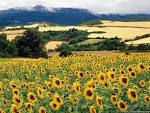Nature Wallpapers For Desktop Biography
Early wallpaper featured scenes similar to those depicted on tapestries, and large sheets of the paper were sometimes hung loose on the walls, in the style of tapestries, and sometimes pasted as today. Prints were very often pasted to walls, instead of being framed and hung, and the largest sizes of prints, which came in several sheets, were probably mainly intended to be pasted to walls. Some important artists made such pieces, notably Albrecht Dürer, who worked on both large picture prints and also ornament prints intended for wall-hanging. The largest picture print was The Triumphal Arch commissioned by the Holy Roman Emperor Maximilian I and completed in 1515. This measured a colossal 3.57 by 2.95 metres, made up of 192 sheets, and was printed in a first edition of 700 copies, intended to be hung in palaces and, in particular, town halls, after hand-coloring. Very few samples of the earliest repeating pattern wallpapers survive, but there are a large number of old master prints, often in engraving of repeating or repeatable decorative patterns. These are called ornament prints and were intended as models for wallpaper makers, among other uses. England and France were leaders in European wallpaper manufacturing. Among the earliest known samples is one found on a wall from England and is printed on the back of a London proclamation of 1509. It became very popular in England following Henry VIII's excommunication from the Catholic Church - English aristocrats had always imported tapestries from Flanders and Arras, but Henry VIII's split with the Catholic Church had resulted in a fall in trade with Europe. Without any tapestry manufacturers in England, English gentry and aristocracy alike turned to wallpaper







 Nature Wallpapers For Desktop
Nature Wallpapers For Desktop
Early wallpaper featured scenes similar to those depicted on tapestries, and large sheets of the paper were sometimes hung loose on the walls, in the style of tapestries, and sometimes pasted as today. Prints were very often pasted to walls, instead of being framed and hung, and the largest sizes of prints, which came in several sheets, were probably mainly intended to be pasted to walls. Some important artists made such pieces, notably Albrecht Dürer, who worked on both large picture prints and also ornament prints intended for wall-hanging. The largest picture print was The Triumphal Arch commissioned by the Holy Roman Emperor Maximilian I and completed in 1515. This measured a colossal 3.57 by 2.95 metres, made up of 192 sheets, and was printed in a first edition of 700 copies, intended to be hung in palaces and, in particular, town halls, after hand-coloring. Very few samples of the earliest repeating pattern wallpapers survive, but there are a large number of old master prints, often in engraving of repeating or repeatable decorative patterns. These are called ornament prints and were intended as models for wallpaper makers, among other uses. England and France were leaders in European wallpaper manufacturing. Among the earliest known samples is one found on a wall from England and is printed on the back of a London proclamation of 1509. It became very popular in England following Henry VIII's excommunication from the Catholic Church - English aristocrats had always imported tapestries from Flanders and Arras, but Henry VIII's split with the Catholic Church had resulted in a fall in trade with Europe. Without any tapestry manufacturers in England, English gentry and aristocracy alike turned to wallpaper
Nature Wallpapers For Desktop
Nature Wallpapers For Desktop
Nature Wallpapers For Desktop
Nature Wallpapers For Desktop
Nature Wallpapers For Desktop
Nature Wallpapers For Desktop
Nature Wallpapers For Desktop
Nature Wallpapers For Desktop
Free Desktop Nature Wallpapers Collection For Your Desktop
The Best Nature Wallpapers For You Computer Desktop
No comments:
Post a Comment